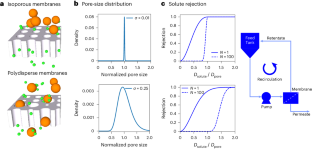2024-06-20 チャルマース工科大学
<関連情報>
- https://news.cision.com/chalmers/r/supermassive-black-hole-appears-to-grow-like-a-baby-star,c4001332
- https://www.aanda.org/articles/aa/full_html/2024/04/aa48821-23/aa48821-23.html
ESO320-G030で観測された壮大な銀河規模の電磁流体動力風 A spectacular galactic scale magnetohydrodynamic powered wind in ESO 320-G030
M. D. Gorski, S. Aalto, S. König, C. F. Wethers, C. Yang, S. Muller, K. Onishi, M. Sato, N. Falstad, J. G. Mangum, S. T. Linden, F. Combes, S. Martín, M. Imanishi, K. Wada, L. Barcos-Muñoz, F. Stanley, S. García-Burillo, P. P. van der Werf, A. S. Evans, C. Henkel, S. Viti, N. Harada, T. Díaz-Santos, J. S. Gallagher and E. González-Alfonso +
Astronomy and Astrophysics Published:10 April 2024
DOI:https://doi.org/10.1051/0004-6361/202348821

Abstract
How galaxies regulate nuclear growth through gas accretion by supermassive black holes (SMBHs) is one of the most fundamental questions in galaxy evolution. One potential way to regulate nuclear growth is through a galactic wind that removes gas from the nucleus. It is unclear whether galactic winds are powered by jets, mechanical winds, radiation, or via magnetohydrodynamic (MHD) processes. Compact obscured nuclei represent a significant phase of galactic nuclear growth. These galaxies hide growing SMBHs or unusual starbursts in their very opaque, extremely compact (r < 100 pc) centres. They are found in approximately 30% of the luminous and ultra-luminous infrared galaxy population. Here, we present high-resolution ALMA observations (∼30 mas, ∼5 pc) of ground-state and vibrationally excited HCN towards ESO 320-G030 (IRAS 11506-3851). ESO 320-G030 is an isolated luminous infrared galaxy known to host a compact obscured nucleus and a kiloparsec-scale molecular wind. Our analysis of these high-resolution observations excludes the possibility of a starburst-driven wind, a mechanically or energy driven active galactic nucleus wind, and exposes a molecular MDH wind. These results imply that the nuclear evolution of galaxies and the growth of SMBHs are similar to the growth of hot cores or protostars where gravitational collapse of the nuclear torus drives a MHD wind. These results mean galaxies are capable, in part, of regulating the evolution of their nuclei without feedback.



